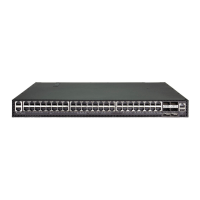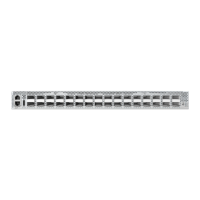– 363 –
11 Link Aggregation Commands
Ports can be statically grouped into an aggregate link (i.e., trunk) to increase the
bandwidth of a network connection or to ensure fault recovery. Or you can use the
Link Aggregation Control Protocol (LACP) to automatically negotiate a trunk link
between this switch and another network device. For static trunks, the switches
have to comply with the Cisco EtherChannel standard. For dynamic trunks, the
switches have to comply with LACP. This switch supports up to 12 trunks. For
example, a trunk consisting of two 1000 Mbps ports can support an aggregate
bandwidth of 4 Gbps when operating at full duplex.
Guidelines for Creating Trunks
General Guidelines –
◆ Finish configuring trunks before you connect the corresponding network
cables between switches to avoid creating a loop.
◆ A trunk can have up to 8 ports.
◆ The ports at both ends of a connection must be configured as trunk ports.
Table 69: Link Aggregation Commands
Command Function Mode
Manual Configuration Commands
interface port-channel Configures a trunk and enters interface
configuration mode for the trunk
GC
port channel
load-balance
Sets the load-distribution method among ports in
aggregated links
GC
channel-group Adds a port to a trunk IC (Ethernet)
Dynamic Configuration Commands
lacp Configures LACP for the current interface IC (Ethernet)
lacp admin-key Configures a port's administration key IC (Ethernet)
lacp port-priority Configures a port's LACP port priority IC (Ethernet)
lacp system-priority Configures a port's LACP system priority IC (Ethernet)
lacp admin-key Configures an port channel’s administration key IC (Port Channel)
Trunk Status Display Commands
show interfaces status
port-channel
Shows trunk information NE, PE
show lacp Shows LACP information PE
show port-channel load-
balance
Shows the load-distribution method used on
aggregated links
PE
